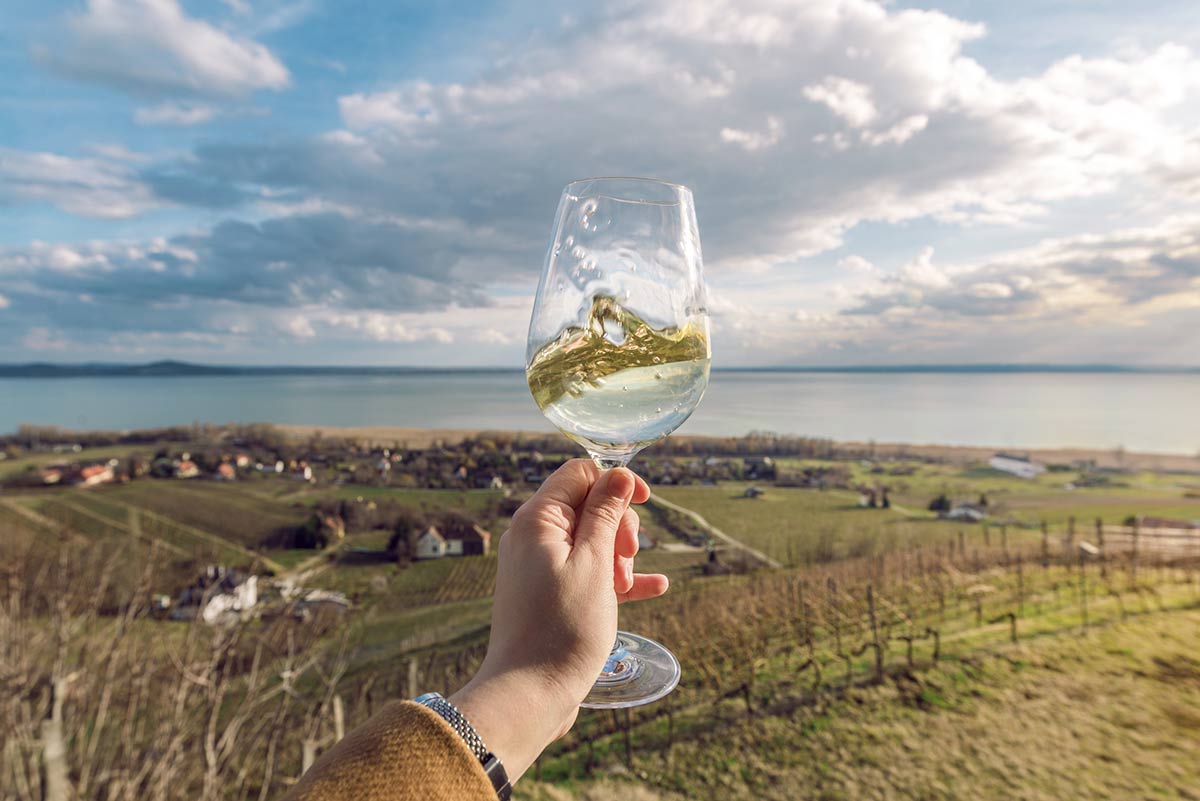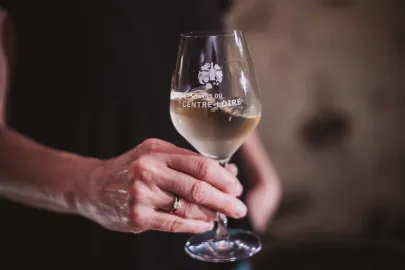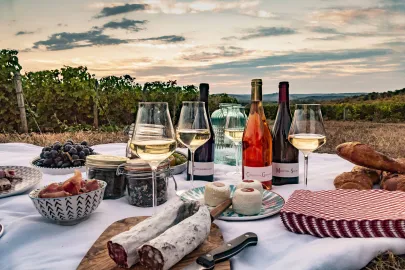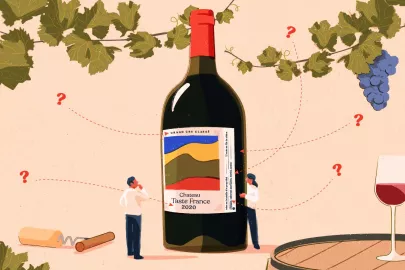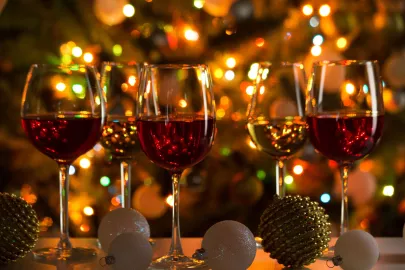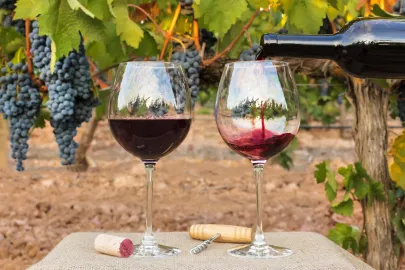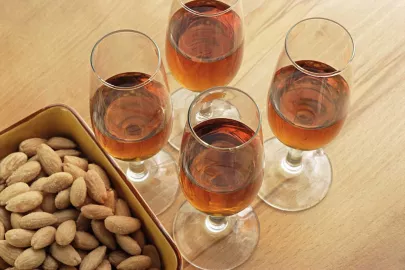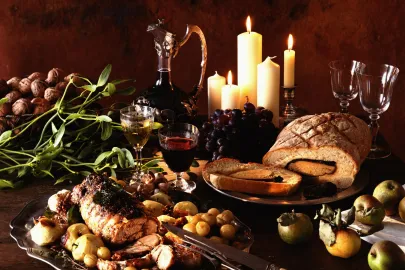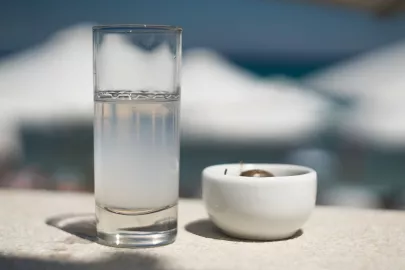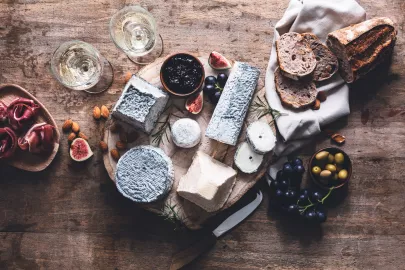The natural wine craze is one of the hottest trends in the food and beverage industry, but in fact, it’s an ancient concept: wine made with no additives, chemicals, or pesticides.
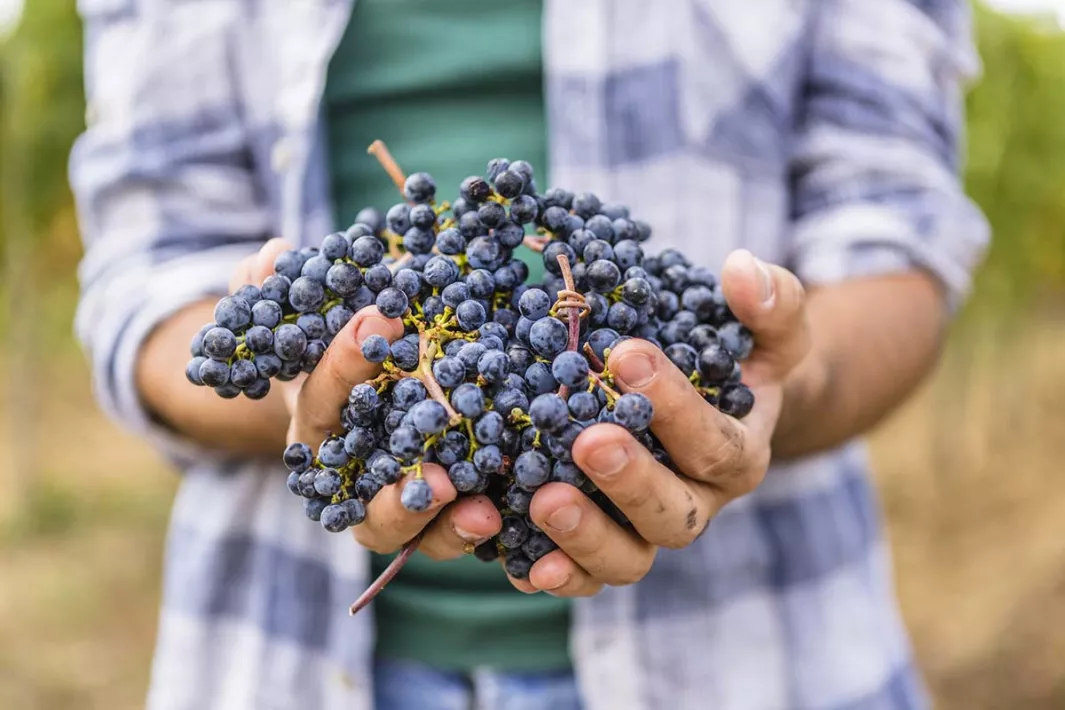
Natural wine, also known as raw wine or naked wine, is made with low intervention, letting the grapes and natural yeasts do the work to create bold, fruity, and funky wines. Natural wine starts with organic or biodynamic grapes that are grown without pesticides or herbicides. After the grapes are handpicked and transferred to vats, natural yeasts on the grapes begin the process of fermentation, turning the grape juice into wine.
For conventional winemakers, the process might look very different. Many traditional wineries will use pesticides and herbicides to keep their vines intact and use machines to harvest the grapes, since they’re working at a much larger scale. From there, various ingredients are added to the grapes in order for the wine to develop certain flavors and characteristics. These additives can range from things like activated charcoal to filter the wine or carbon dioxide to create sparkling wine, or in weirder cases, things like egg whites, oak flavoring, or Mega Purple, which is essentially super-strength food coloring to give wine a dark, inky hue.
While these additives aren’t necessarily bad for you, natural wine is considered a clever, purer product, made with less pollution and no chemicals. Some even claim it doesn't give you a hangover (but it’s easy to prove that false yourself).
The fervor around natural wine began with a handful of small, family-run wineries in France that began to experiment with ancient techniques. In Paris in the 1990s, wine bars and shops began to host tastings for these unique wines, and the popularity of natural wine exploded across the globe.
In the United States, natural wine bars and shops dedicated to natural wines are popping up in cities from coast to coast, letting wine enthusiasts across the country taste funky, flavorful, and delightfully drinkable natural wines from France–the country where it all started.
Below, we recommend five French natural wines for your next dinner party–but we can’t guarantee that you won’t have a hangover.
Taste France Magazine’s selection
Red: Domaine Matin Calme “Mano a Mano”
Region: Languedoc-Roussillon
Varietal: Grenache and Carignan
Flavor: Light in color, this red wine is fresh and fruity, with earthy, mineral aromas. Enjoy with hearty dishes like roast lamb with vegetables.

© ©Domain Matin Calme_Mano Mano
Pet Nat: Domaine Anna et Andre Durrmann “Cuvee Nature Pur Jus”
Region: Alsace
Varietal: Pinot Blanc, Riesling, and Pinot Gris
Flavor: With a light funk and a fruity finish, this delightfully tart sparkling wine pairs well with rich, creamy cheeses.

© ©Domaine Anna et Andre Durrmann
Orange: Domaine Plageoles “Terroirists”
Region: Gaillac
Varietal: Muscadelle, Loin de L’oeil, Sauvignon Blanc, Verdanel, and Mauzec Vert
Flavor: Rich and funky with aromas of dry apricots and spices, this wine works well with cold fish dishes like smoked salmon, caviar, or sushi.

© ©Domaine Plageoles
Rosé: Domaine Tempier “Bandol”
Region: Provence
Varietal: Mourvedre, Granche, and Cinsault
Flavor: This floral, fruit-driven rose pairs well with light dishes like grilled salmon with quinoa or salade nicoise.
White: Domaine Sylvain Pataille “Les Mechalots”
Region: Burgundy
Varietal: Chardonnay
Flavor: Creamy oak and tart green apple give this wine a perfectly balanced acidity that pairs well with dishes like pasta or quiche.
Where to Buy:
In New York City, Wine Therapy ships to 45 states (excluding Arkansas, Kentucky, Michigan, Mississippi, and Utah). You can also find natural wines in local shops like Wild Wines in Brooklyn, Red & White Wines in Chicago, Minimo in Oakland, Verjus in San Francisco, and Lolo in Los Angeles.
Contributor

Editor

